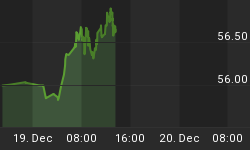Fed Chairman Greenspan testified today before the Joint Economic Committee (JEC). As an aside, the JEC is one of the best committees in Congress. Why? Because it has no legislative authority. In other words, it can do no harm. Greenspan did not break any new ground in today's testimony. Although economic growth has slowed, Greenspan does not see further slowing. Inflation is contained. The recent spike in unit labor costs is partially the result of one-off increases in bonuses and stock-option redemptions. Housing is "frothy" in some regional markets, but there is no national housing bubble, according to Greenspan. There are no material threats to the national economy if some of the housing froth dissipates. In his prepared comments, Greenspan cut and pasted from the May 3rd FOMC policy announcement in that the FOMC still "believes that policy accommodation can be removed at a pace that is likely to be measured. Nonetheless, the Committee will respond to changes in economic prospects as needed to fulfill its obligation to maintain price stability." So, the Fed will keep raising the funds rate by 25 basis points per meeting for the foreseeable future. But how far into the future is foreseeable? That is, does Greenspan know the level of the funds rate that would be "neutral"? No. Greenspan said that the Fed did not have the expertise to determine ahead of time what the level of the neutral funds rate is. But he would know it when it got there. So, the neutral funds rate might be 3.25% or 5.25%. All we could infer from Greenspan's comments is that he believes the current 3.00% funds rate is below neutral.
As Greenspan nears the end of his Fed tenure, he is showing uncharacteristic humility in that he still is baffled by the decline in the 10-year Treasury yield in the past year. Although he notes that historically a flattening yield curve has been associated with future weaker economic growth, he does not believe that this is the message the yield curve is sending today. But Greenspan seems to have a blind spot when it comes to flattening yield curves. This is illustrated in Chart 1.
Chart 1
Back in 1988, the 10-year Treasury - fed funds rate spread narrowed from 125 basis points in August to 35 basis points in December. I remember that someone asked Greenspan whether this was a sign that economic growth would be weakening. He responded that the narrowing spread did not presage slower economic growth and continued to raise the fed funds rate, pushing the funds rate above the 10-year yield in 1989. In 1990, we experienced a recession. Between January and March of 2000, this yield spread narrowed from 121 basis points to minus 3 basis points in April. The Fed then raised the funds rate another 50 basis points in May of 2000, inverting the yield curve even more. The economy slipped into a recession in 2001.
Chart 2
Chart 2, which I repeat from yesterday's commentary, shows the regular negative relationship between this yield spread and the ISM Manufacturing New Orders index. As the spread has narrowed in the past year, the New Orders index has plunged toward the 50 level. But Greenspan says it is different this time, just as he said back in 1988 and 2000.















